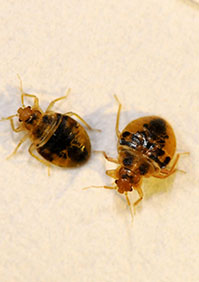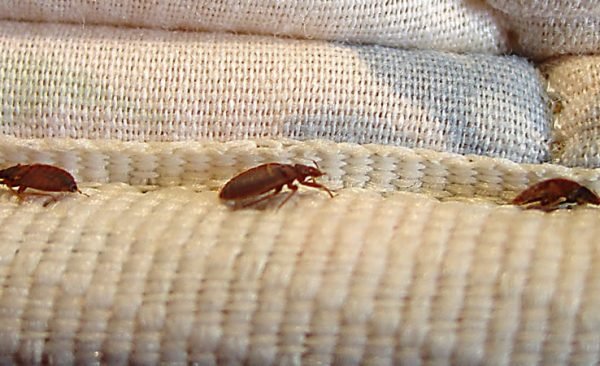How to Recognize Bed Bug Bites and Treat Them Quickly
Obtain Enlightened About the Sorts Of Parasite Control Methods and Their Advantages for House Owners
Understanding the various pest control methods available to homeowners is essential for effective pest management. From chemical and organic strategies to social and mechanical methods, each technique presents unique advantages that can dramatically influence both wellness and environmental safety. Homeowners that are knowledgeable can make critical selections that not only address bug problems but additionally improve the general quality of their living setting. As we check out these techniques further, it comes to be clear that the decision-making procedure involves even more than just immediate outcomes; it touches on long-lasting sustainability and well-being. What factors should affect these important decisions?
Chemical Bug Control Techniques
Chemical parasite control techniques are a critical element of incorporated insect monitoring techniques for home owners seeking effective remedies to pest infestations. These techniques entail the application of chemical substances developed to remove or deter bugs that endanger individual residential or commercial property, health and wellness, and convenience. Common chemicals utilized consist of pesticides, fungicides, rodenticides, and herbicides, each tailored to target specific bugs.
The primary advantage of chemical insect control is its fast performance; many formulations offer instant outcomes, lowering pest populations substantially in a brief time. In addition, advances in chemical formulations have led to products that are more eco-friendly and have lower toxicity levels for non-target organisms when used appropriately.

Organic Pest Control Methods
All-natural pest control techniques have actually acquired importance as homeowners look for more secure and much more lasting choices to traditional chemical techniques. Organic pest control methods make use of all-natural predators, parasites, or microorganisms to take care of pest populations successfully. This approach is not only eco-friendly yet also reduces the danger of damage to non-target varieties, consisting of advantageous bugs and wild animals.
Among one of the most usual biological control methods involves introducing natural predators into the environment. Ladybugs can be utilized to regulate aphid populaces, while nematodes target soil-dwelling bugs like grubs. In addition, parasitoids-- microorganisms that survive or within a host-- can be used to regulate certain parasite varieties by laying eggs inside them, ultimately leading to their demise.
Another approach is making use of biopesticides, which are originated from all-natural materials such as germs, plants, or minerals (bed bug exterminator). These items can properly target bugs while presenting very little threat to pets and humans. On the whole, organic insect control techniques provide home owners with a reliable methods of bug administration that aligns with ecological concepts, promoting a healthier living setting while minimizing reliance on artificial chemicals
Mechanical Bug Control Techniques
Mechanical pest control approaches include a variety of approaches that physically prevent or get rid of insects without using chemicals. These methods are particularly beneficial for home owners seeking eco friendly options while making sure the safety of their space.
One common approach is the use of obstacles, such as catches, nets, and displays, which prevent parasites from getting in homes or particular locations. For example, setting up home window displays can successfully maintain insects out, while using physical barriers around yards can deter larger parasites like deer or rabbits. Furthermore, mechanical catches designed for rodents can discover this catch and get rid of these pests without the need for hazardous materials.
An additional effective technique includes using brooms and vacuums to remove insects straight from surface areas. Normal cleansing and upkeep can significantly lower pest populations by eliminating food sources and hiding areas. Moreover, utilizing gadgets like ultrasonic bug repellents can hinder various pests through sound waves that are unpleasant to them but inaudible to humans.
Cultural Insect Control Practices
Cultural pest control techniques concentrate on changing the setting and administration methods to create conditions that are much less for pest invasions. These methods are fundamental in maintaining a well balanced ecological community and minimizing the reliance on chemical interventions. By modifying farming methods, homeowners can effectively hinder bugs while promoting plant health and wellness.
One usual technique includes plant rotation, which disrupts the life process of insects by changing the kinds of plants grown in a specific location (bed bug exterminator). This not just minimizes pest populaces yet likewise improves dirt health. In addition, intercropping-- planting diverse plants in proximity-- can perplex insects and lower their capability to locate their Related Site favored host plants
Water management is an additional essential element of social methods. Correct irrigation strategies can avoid standing water, which functions as a breeding place for insects and other bugs. Furthermore, keeping cleanliness around the home, such as frequently getting rid of debris and food waste, can dramatically reduce bug attraction.
Integrating these cultural methods right into an extensive bug monitoring strategy enables house owners to develop an environment that naturally prevents parasites, therefore improving the performance of various other control methods while promoting sustainable gardening and landscaping.

Integrated Bug Administration Approaches
Integrated Insect Management (IPM) stands for an all natural technique that integrates various strategies to effectively take care of bug populaces while minimizing ecological effect. This methodology incorporates organic, cultural, physical, and chemical techniques to accomplish sustainable parasite control. By examining pest populations and their natural adversaries, IPM highlights monitoring and recognizing insects prior to carrying out control steps.
Among the core principles of IPM is using limits, which establish the degree of pest task that requires intervention. This makes sure that treatments are used only when needed, decreasing the dependence on chemical pesticides. Biological control approaches, such as introducing natural killers or parasites, operate in conjunction with cultural techniques like crop turning and habitat control to disrupt pest life process.
Furthermore, IPM urges making use of least-toxic chemical options when intervention is essential, prioritizing items that pose very little threat to non-target organisms and the atmosphere. For homeowners, embracing IPM comes close to not only boosts the effectiveness of parasite management however additionally promotes a healthier living atmosphere, cultivating biodiversity and reducing chemical exposure. Inevitably, IPM equips homeowners to make educated choices that stabilize parasite control with ecological obligation.
Verdict
In final thought, recognizing the read the full info here numerous bug control techniques equips home owners to make educated choices relating to pest monitoring. Each strategy-- chemical, biological, mechanical, social, and integrated bug management-- provides distinctive benefits that cater to various demands and preferences.
Understanding the numerous insect control approaches offered to house owners is vital for effective bug monitoring.Chemical insect control approaches are an important part of integrated parasite management methods for homeowners looking for reliable services to pest problems. Overall, biological bug control techniques offer home owners with an effective means of insect monitoring that straightens with ecological principles, advertising a much healthier living environment while decreasing dependence on artificial chemicals.
Social pest control methods focus on customizing the setting and monitoring techniques to create conditions that are less favorable to pest problems.In verdict, understanding the various insect control techniques equips homeowners to make educated choices regarding pest management.